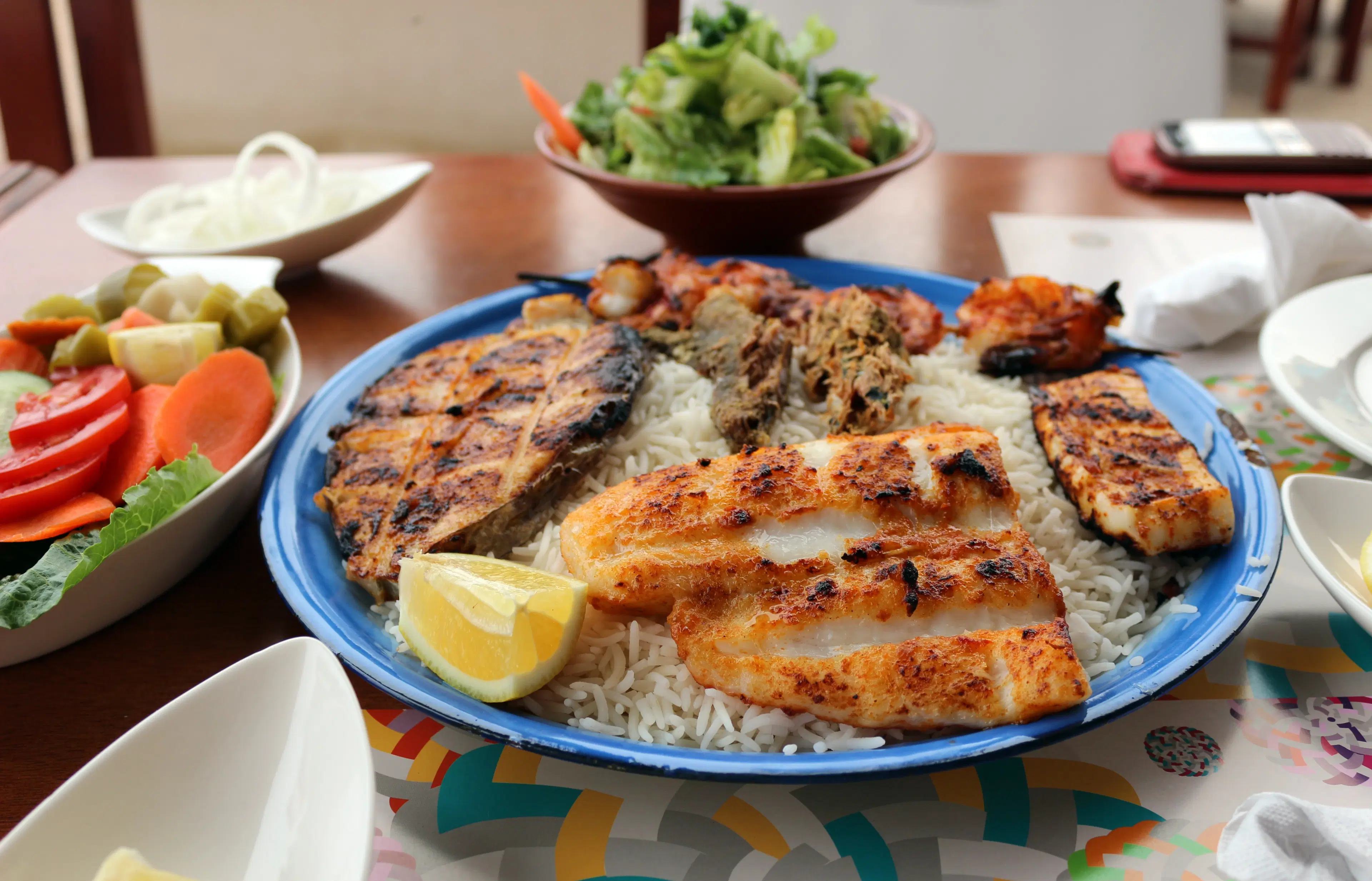
Flights
•04 min read

Arab culture food opens up a world of rich traditions, aromatic spices, and heartwarming communal experiences that have developed over millennia. Every dish tells a story of heritage, passion, and the art of culinary excellence. As you journey through the flavors of Middle Eastern cuisine, you will uncover the deep cultural roots that bind communities together and celebrate the joy of sharing a meal.
At the core of Arab cuisine lies a blend of history, geography, and tradition. The rich tapestry of Arab food ingredients—ranging from rice, lentils, and chickpeas to succulent lamb and olive oil—has evolved with influences from Mediterranean and Middle Eastern culinary practices. The magic of Arabic spices such as sumac, za’atar, cardamom, and saffron not only adds depth to dishes but also speaks to a history that intertwines trade, passion, and culture.
Arab food recipes are a testament to how diverse ingredients combine with traditional techniques to create extraordinary flavors that transcend borders. The emphasis on fresh and wholesome ingredients in everyday meals is a reflection of centuries-old practices that value both nourishment and the art of cooking. Whether it’s the hearty lentil soup or the delicate balance of spices in a vegetable rice dish, each meal tells a story of care and reverence for culinary heritage.
For many, food is not just sustenance—it is a celebration of life’s best moments. In Arab households, the act of gathering around a table to share a meal mirrors the same sentiment found in creating travel memories. Just as Tata Neu enriches travel experiences with premium services and NeuCoins on every booking (1 NeuCoin = 1₹ saving), a shared meal in Arab culture brings rewards in the form of cherished memories and cultural connection.
When it comes to traditional Arab dishes, variety and taste go hand in hand. Everywhere you turn, you can find meals like hummus, shawarma, falafel, and kebabs—dishes that have captured local and global hearts. Regional nuances ensure that each preparation method and spice blend brings its own unique touch to these popular Arab meals. The sweet side of Arab cuisine is equally compelling, with desserts such as baklava, kunafa, and qatayef holding a special place during festive seasons like Ramadan and Eid.
These dishes are often enjoyed not only for their delightful flavors but also for their cultural significance. Much like a well-planned travel itinerary that offers a mix of comfort and unexpected moments of magic, these meals offer a rich tapestry of experiences where each bite reveals a story of tradition and artistry.

Arab food is more than just delicacies on a plate—it is the embodiment of hospitality. The tradition of communal meals, where large platters are shared among family and friends, speaks to a deep value placed on togetherness. The practice of eating with hands, a gesture that cultivates intimacy with the food, is a ritual passed down through generations. This kind of immersive custom is at the heart of Arab culinary traditions and has been cherished as a metaphor for unity and generosity.
Religious and festive occasions further accentuate the importance of food, where every meal carries a symbolic weight. During Ramadan and Eid, special dishes such as maqluba and lamb ouzi not only satisfy the palate but also nurture the soul. These culinary celebrations echo the same level of care and meticulous preparation found in planning a luxurious travel experience. Imagine booking a flight with Air India or Air India Express, where each element of your journey is meticulously designed for comfort and reliability, similar to the thoughtful preparation of an authentic Arab feast.
Beyond the formal traditions associated with religious and festive contexts, everyday Arab meals carry a distinct charm of their own. In bustling streets, you will find vibrant street food vendors serving favorites like manakish, falafel wraps, and sambousek. These affordable treats are a reminder that great food does not always have to come with an extravagant price tag. Their popularity in daily life mirrors the accessible yet premium travel solutions offered by Tata Neu. Enjoying a fleeted delight from a local stall can be as uplifting as discovering an exclusive member deal or earning NeuCoins on every booking.
Inside Arab homes, meals such as lentil soup or a wholesome plate of spiced rice with vegetables are prepared with finesse and care. The focus on fresh, high-quality ingredients and time-honored recipes is a nod to the value placed on family and tradition. This intrinsic love for food resonates deeply with anyone who enjoys the art of travel—a journey that is enriched by local flavors, stories, and experiences.
Insight Corner: "Did You Know?"
Arab cuisine is one of the oldest in the world, with recipes passed down through generations for thousands of years. The use of spices like sumac and za’atar dates back to ancient trade routes, making Arab food a true testament to culinary history.
Traditional Arab food includes dishes like hummus, falafel, shawarma, and kebabs, which are widely cherished across the region.

There isn’t a single national dish for all Arab countries. Iconic meals vary by region, with specialties such as mansaf in Jordan, kabsa in Saudi Arabia, and couscous in the Maghreb region standing out.
Absolutely. Food is at the heart of Arabic culture, representing hospitality, unity, and tradition. Meals are shared communally and play a significant role during religious and festive occasions.
Hummus, shawarma, and falafel are among the most popular selections and continue to be enjoyed both locally and internationally.
Arab culture food transcends being merely a collection of recipes; it represents the warmth, history, and shared love for life that unites people. The culinary traditions of the Arab world teach us that food brings people together, creates lasting memories, and continues to inspire both locals and travelers alike. Much like planning a journey with Tata Neu, where every detail—from booking a comfortable flight with Air India to earning NeuCoins on your reservation—matters in creating an enriching travel story, enjoying Arab cuisine is about relishing every moment and every flavor on the plate.
As you explore the diverse world of Arab cuisine, be it through a quick bite of street food or a lavish family feast, you’ll soon realize that every dish is an expression of history, love, and the joy of life itself. In the same way that travel opens up new horizons, the traditional Arab dishes and their cultural significance invite you to savor life’s finer moments, making every journey a cherished memory.